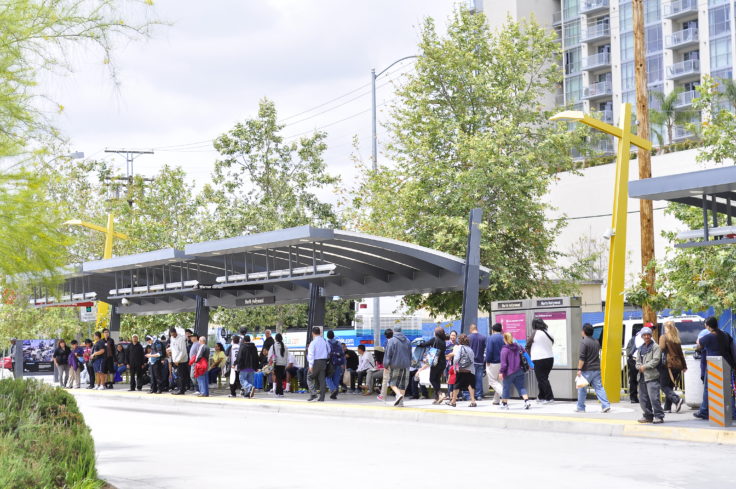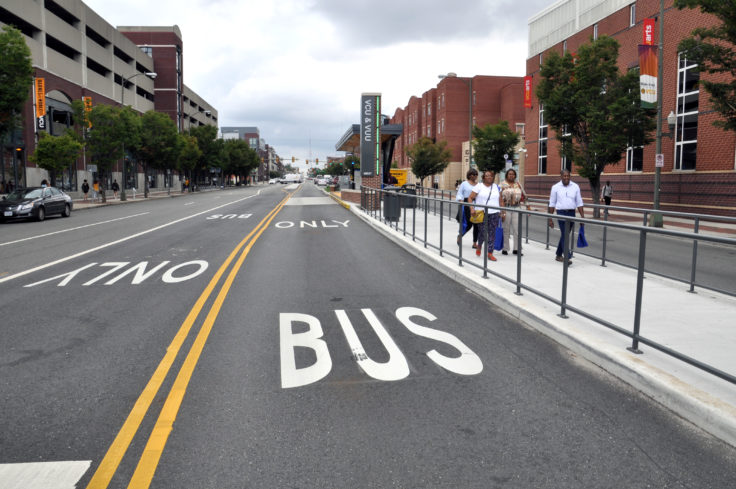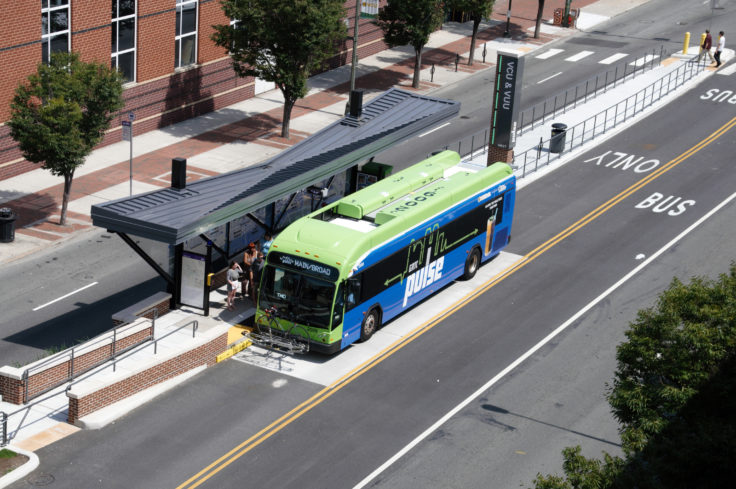September 26, 2019
ITDP Releases First-Ever Bus Rapid Transit Guide for U.S. Cities
Released during Climate Week, this guide empowers planners and policymakers to reduce carbon emissions from transport, critical to achieving city climate mitigation goals and resiliency plans.
 As cities around the United States lead new efforts to cut carbon emissions, the Institute for Transportation & Development Policy (ITDP) released its first-ever comprehensive guide offering strategies for implementing BRT as a sustainable mobility solution in the U.S. context. Getting to BRT: An Implementation Guide for U.S. Cities is geared toward planners and policymakers interested in BRT as an investment that will decrease transport-related greenhouse gases while boosting transit ridership, improving air quality, promoting economic development and social equity, and reducing traffic congestion.
As cities around the United States lead new efforts to cut carbon emissions, the Institute for Transportation & Development Policy (ITDP) released its first-ever comprehensive guide offering strategies for implementing BRT as a sustainable mobility solution in the U.S. context. Getting to BRT: An Implementation Guide for U.S. Cities is geared toward planners and policymakers interested in BRT as an investment that will decrease transport-related greenhouse gases while boosting transit ridership, improving air quality, promoting economic development and social equity, and reducing traffic congestion.
“As more cities take leadership on climate, we’ve heard strong demand for a new BRT resource focused on the regulatory, social, environmental, and funding dimensions particular to the United States,” said Michael Kodransky, ITDP U.S. Director. “With the looming climate crisis, we hope this guide inspires U.S. cities to develop BRT corridors designed and executed with the highest standard of excellence, creating incredible new and improved connections for local communities. With this guide, cities can better use their streets to move more people in less vehicles— optimizing resources for all.”
“We designed this guide to be useful to both seasoned transit experts as well as policymakers only beginning to consider BRT as an option for their community,” said Aileen Carrigan, ITDP consultant and principal author of the guide. “The guide meets U.S. planners and policymakers where they are. Readers can flip from section to section to find the information most relevant to their point in the process.”

Global cities that invested in BRT witnessed a significant decrease in carbon emissions with dramatic improvements to local air quality. In many cases, the annual CO2 reduction from BRT is the equivalent of taking 20,000-40,000 cars off the road, offering important lessons for U.S. cities.
The ITDP guide offers strategies around implementing a BRT corridor from initial conception to operations in the U.S., helping readers anticipate common challenges and opportunities.
The guide walks through:
- How to determine corridors
- Environmental impact assessments
- Equitably planning routes, fares, and overall benefits of a new corridor
- Public engagement strategies
- Best practices for inter-agency and community collaboration
- Funding sources at the federal, state, and local levels, as well as options for public-private partnerships
- The Buy America Provision that requires procuring American-made materials for federally-funded transit projects
- Fleet procurement including the most common fuel and vehicle technologies
To demonstrate how BRT planning works in practice, the guide offers case studies of three U.S. cities – Hartford, Albuquerque, and Richmond – that have successfully advanced BRT, as well as insights from several US cities currently pursuing BRT. ITDP developed these case studies through detailed interviews with more than two dozen projects leaders in the fields of planning, architecture, design, communications, and policy.


Richmond’s GRTC Pulse was awarded Bronze Standard for its BRT features like a dedicated bus lane and off-board fare collection (demonstrated above)
